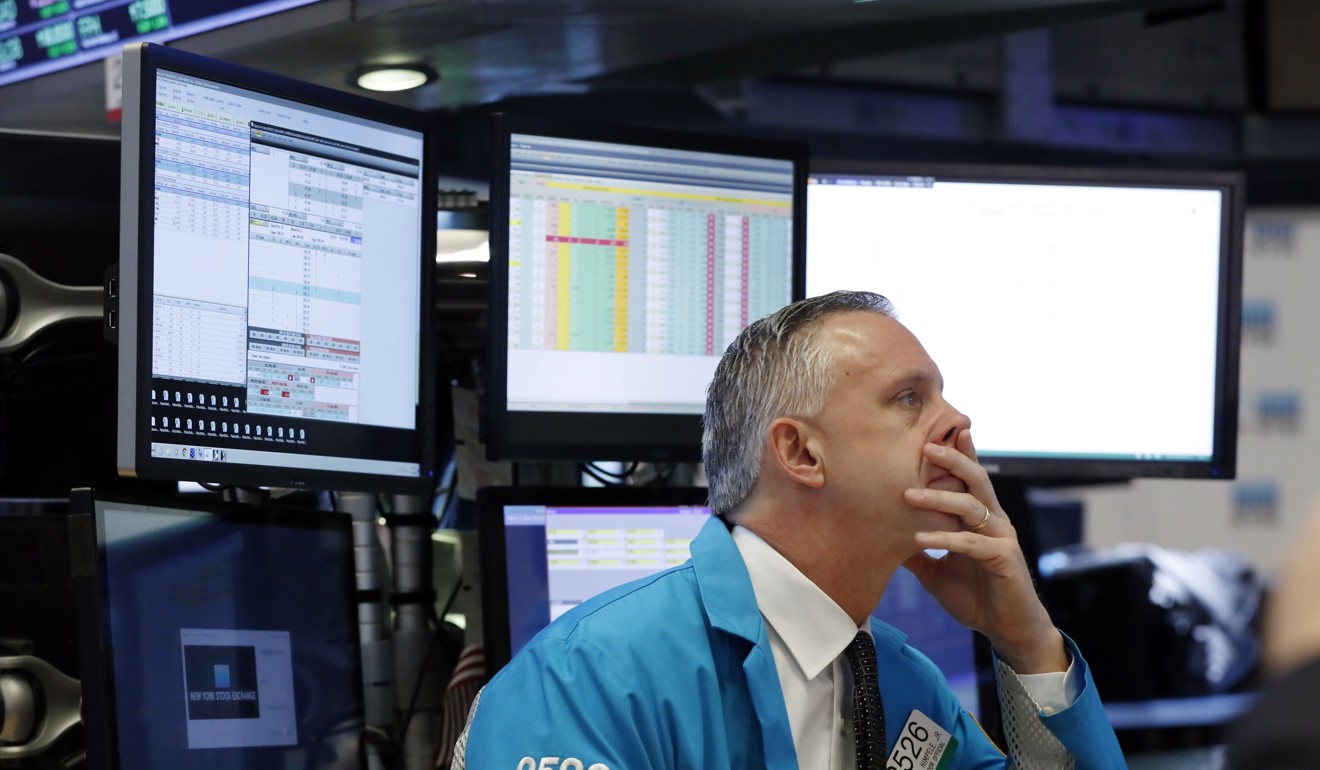Three reasons the ‘Trump bump’ can no longer be counted on to prop up financial markets
- Standing up to China is now a bipartisan political strategy and the US president’s unpredictable trade policies are taking a toll on market confidence. So, investors should be cautious, especially as Fed rate cuts are not guaranteed

As recently as last December, the biggest source of turbulence in financial markets was the fear of excessive tightening in US monetary policy.
Six months later, bond markets are pricing in two to three interest-rate reductions by the end of this year, starting within the next three months. Traders would have given their right arms for such odds at the end of last year when stock markets were in free fall.
The dramatic repricing of the US Federal Reserve’s future rate policy began in January when the central bank abruptly put rate increases on hold. It really gathered steam last month when US President Donald Trump unexpectedly renewed his trade offensive against China, and, just last week, threatened to impose tariffs on all imports from Mexico.
The Fed was already under pressure from investors to loosen policy; Trump’s actions make it very difficult for the central bank not to cut rates without roiling markets. Having leaned on the Fed for several months to cut rates, Trump is now likely to get his wish.
The revival of the trade war is also heaping pressure on Beijing to deliver more stimulus, which could boost US stocks, Trump’s preferred yardstick of his success as president. Signalling the degree to which markets are betting on more stimulus in China, currency traders believe the escalation in tensions have tipped the scales in Beijing’s favour, pushing the yuan towards the psychologically important 7-per-US-dollar level.
If the fallout of the latest flare-up in the US-China conflict forces both the Fed and China to simultaneously provide additional stimulus, then, provided there is a de-escalation of the conflict at some point, it is possible that Trump’s actions could end up boosting America’s economy.
While some investors may well be betting on such an outcome, they would be foolish to do so.
First, it is highly unlikely that the Fed and Chinese economic policy were uppermost in Trump’s mind when he decided to raise tariffs on Chinese imports and launch a crackdown on Huawei. Standing up to China is a crucial plank of Trump’s strategy as his presidential re-election campaign gathers pace.
It is also the approach advocated by the Democratic Party and one that is privately backed by many American corporate executives.
Second, the damage done to global business confidence and corporate capital expenditure due to the unpredictability of Trump’s trade policies – global manufacturing output in May dropped to its lowest level since 2012, according to IHS Markit – is taking a heavy toll on market sentiment.
Last month, global stocks suffered their worst month since last December, with the S&P 500 down 6.5 per cent. The New York Stock Exchange’s Fang+ Index, a major gauge of technology shares, has plunged more than 17 per cent since May 3.
Regardless of whether trade tensions ease in the coming months, the brinkmanship has cost Trump dearly in the markets, especially since the all-important tech sector became the focal point of the conflict.
Investors, who initially turned a blind eye to the president’s protectionism on the grounds that his pro-growth policies mitigated his nationalist agenda, have been severely punished for being far too complacent.

Third, bond investors are getting ahead of themselves in pricing in a dramatic easing of US monetary policy. While inflation is running below target and several Fed policymakers, including chairman Jerome Powell, have been more outspoken recently in signalling rate cuts should growth weaken sharply, America’s economy, although cooling, is hardly falling off a cliff.
Consumer confidence remains buoyant, manufacturing activity is in expansion territory and the services sector grew at a stronger-than-expected pace last month. This is not yet an economy crying out for aggressive rate cuts.
Indeed, even if the Fed does reduce rates later this year, lower borrowing costs are unlikely to do much to help America’s economy – especially if the trade war intensifies – given that rates already stand at low levels. Moreover, the efficacy of further stimulus measures in China is also questionable, given the recent batch of softer economic data despite more forceful stimulus in the second half of last year.
While Trump has proved surprisingly adept at swaying market sentiment to his advantage, he has burned his bridges with investors over the past month. The “Trump bump”, in which the S&P 500 shot up 26 per cent in the first year of his presidency, is now a distant memory.
Nicholas Spiro is a partner at Lauressa Advisory